My family and I had moved from a fairly small town to a much larger one just before the start of my 6th grade school year. It was a fairly significant change for me. My previous school had been smaller, and rural, with the top-level grade in it being 6th grade. So I’d been mentally prepared to be “top of the heap” as they say. I had plenty of friends, knew everyone well, and had established my place in the pecking order.
My new school was different. In that school system, 6th grade was the start of middle school – the lowest of the pack. Being a more suburban school, and in a larger town, the students were generally more affluent… much different from the smaller community I was from.
To characterize that school year as “an adjustment” would be a great understatement. Everything changed. I’d gone from dressing and acting like a rural elementary school student to a place that expected people to be a bit more “sophisticated”.
Trouble was, I never got the memo.
That Dang Bus
Among the many troubles I faced was a kid on the bus. He was a year older than me, and quite cocky. Though I stood a good head taller than him, I was quite skinny. And he had an aggressive, loud, abrasive personality too. Of course, being the new kid, I was singled out for his ill-treatment.
I dreaded the bus ride home. No matter where I sat, he’d slide in behind me. All the way home, he’d flick at my ears, or mess with my hair. If I protested, he’d smile and act like we were buddies just goofing around. The other kids laughed, but mostly because with me as the prime target, he left them alone.
I told my mom about it. She told me to tolerate it, as he probably had a bad home life, and was just getting out his insecurities… that old mom wisdom. And she reminded me I was much bigger, and ultimately could hurt him if I lashed out.
Enough Is Enough
This went on for a few weeks, and I tolerated it. But eventually, I had enough. I made up my mind. Action was warranted.
As I sat on the bus seat, the big yellow torture box making its way to my neighborhood, he began his antics. As time had gone by, he’d gotten bolder. That day, he grabbed my ear, and gave it a horrid twist, laughing as he did so.
I turned around. “You better stop it, or I’ll kick your butt!” Everyone sitting around made an “oooohhhh” sound. He laughed. “OK, we’ll see.” The gauntlet had been thrown down.
The Reckoning
We both used the same bus stop, as did a few other kids. We filed off the bus, milling around next to the side of the road. Everyone knew the routine. The kids hung around as the bus pulled off. The riders still on-board hung out the windows, hoping to see some action. We all stood and waited for it to go around the bend in the road.
As it disappeared, he turned to me. “Watcha gonna do?” He had the most irksome smirk on his face. Without waiting for me to answer, he reached up and pushed me back. “C’mon, are you gonna do something? Are you afraid?”
At the time, I was a voracious reader. I loved reading WWII books more than anything. Over the last few days, I’d been reading War As I Knew It by General George Patton. I’d been mulling over a saying of his I’d read. “A good plan violently executed now is better than a perfect plan executed next week.”
He pushed me again, and slightly turned his head to look at one of his buddies. “He’s not going to do anything!”
A good plan violently executed now… He never saw it coming.
Assembling The Spitfire
After having assembled and painted the Spitfire’s interior, I was ready to get the airframe assembled. Generally, the basic assembly is very classic, old-school style airplane assembly.
The cockpit nestles nicely between the fuselage halves, with very obvious and good fitting alignment pins for and aft. Dry fit, of course, but it’s a good fit. If you do find that the halves don’t meet completely flush, start by checking your alignment. Tamiya is the Bandai of the aircraft world, and generally, if something doesn’t fit… it’s you, not the kit.
There is an odd piece of engineering, in my opinion. The very forward part of the upper cowl is a separate piece. I find this quite odd, as it introduces an additional seamline that goes across the cowl that must be dealt with, in addition to the one that runs the length of it. I don’t know if this was done to allow for a nicer shape to that area, or for a future version difference. And though it would be easy enough to sand smooth, I did find its inclusion puzzling.
A bead of Tamiya Extra Thin joined it all together, and with only a few seconds of “hand clamping”, I taped things together and set them aside to dry.
The Wingy Thingys
The wings are mostly conventional in assembly. Two upper halves mate to a single lower piece. Tamiya does use undergating for their sprue connection points, so be careful with that. Careful cleanup is needed to avoid introducing a small gap. Personally, I prefer the old-fashioned method myself, as no matter how good the fit is, some seam cleanup is needed – which completely negates the purpose of undergating.
The kit features separate parts for wing tips and ailerons. The wing tips fit well, though do be sure and clean up the mould seam on the inner mating edge. The ailerons were just a bit short on the outer edge, so a small shim was added and sanded down to make a perfect fit.
The Tailplanes
The tailplanes are helpfully provided with the lower half being a single piece, thus assuring good alignment. Upper pieces are glued on, and they feature a bit of “lip” that extends to the lower half, forming a panel line on the underside. This gives a clean, single-piece leading edge, a very good engineering touch.
Once the horizontal stabilizers are in place, you simply add the rudder. Right? Wrong…
Another Photoetch Rant
For some reason I cannot fathom, Tamiya provides a small photoetched part that must be folded and inserted along the vertical tailplane, just over the horizontal stabilize intersection. The idea is to fill this area in with a thin part that has some minor rivet detail. And the part does fit well – perfectly in fact. (Take note, Eduard…)
However…
In my opinion, there’s no point for it. The detail is not so significant that a plastic part could not have equally replicated it. And Tamiya is more than up to the task of producing a plastic part that would work just fine.
Yet for some reason, on this kit, there seems to be a departure from what I’ve expected with Tamiya, and what once might have been cast in plastic is now provided as those dreadful little bits of metal.
Stay On Target Red 5
I did place the little photoetch part in place, though I managed to break off one half of it sanding down the fret nub. Still, it went on with some super glue, tweezers, and minimal employment of paratrooper words.
The rudder – thankfully all plastic – slotted right in place.
I moved on to building the underwing radiator and oil cooler, which go underneath the wing. Again, Tamiya chose to replicate the grill opening on both of these assemblies with photoetch. They both fit perfectly, of course. Yet as I examined them, I was still struck by the fact that these parts did not improve what could be done in plastic. In fact, I think it’s a bit of a step back.
Had the parts been in plastic, it would have employed some 3D relief, allowing for a nice drybrush and wash to really sell the depth. However, the photoetch won’t really do that. It’s just flat. Still, I figured it would hardly be visible, so aside from more grumbling against bits of metal in my Spitfire toy. I moved on.
Making The Spitfire Shape
Some sanding and minor Mr. Surfacer application was needed along the various seams, but nothing terribly egregious. A quick test fit of the wing showed the fit to the fuselage was mostly good. Mostly.
I surmised that the lower half of the cockpit assembly was impeding perfect fit, so I gently sanded the forward area of that section down. Take care if you do this – no one wants parts coming loose!
With a little sanding finished, the wing to fuselage join was near perfect. I say “near” perfect simply because no Spitfire I’ve ever built – not a single on in 85 examples across multiple scales and manufacturers – seems o get the lower aft fuselage to wing join right. The section does have some subtle but odd curves, and always seems to require some filling and sanding to get right. Still – Tamiya’s new tool Spitfire gets tantalizingly close to “just right”.
How About Them Legs?
I think the standout point of clever engineering on this kit would be the landing gear. The Spitfire had an odd gear setup. The struts were mounted inboard, and had a bit of an odd angle, both fore and aft as well as side to side. Additionally, the wheels sat at an odd angle when viewed from the front.
Most kits provide left and right gear legs, with various methods of attachment. Even if the join is good and the parts nice, care must be taken to get all the angles correct.
Tamiya has cleverly blown through this by simply providing the gear struts as a single part. The two struts “hand down”, joined in the middle by a single plastic “beam”. This is simply inserted into the lower wing as a whole, which sets the alignment in all directions perfectly. Two perfectly fitting parts slot in over them to seal up the “magic”.
It does mean that the gear must be painted in place, but I normally do that on Spitfires anyway, as it ensures a good, stable glue join. I suppose it could be added at the end, but such a course of action would need good testing to ensure a clean fit of all parts.
Finishing Up The Airframe
With all those parts in place, a bit more tidying up was done, making sure all seams were filled and sanded, all joins checked for hairline cracks, and generally that everything was ready for primer.
Just prior to priming, I added the forward windscreen. To allow for multiple versions, the armored glass piece is not part of the windscreen, but must be glued on afterwards. It works OK, I suppose, but great care must be taken to avoid glue marks. The smaller canopy piece aft of the cockpit was added, and all clear parts were mask, the sliding portion being left off the model. The cockpit opening was then masked off.
Ancillary parts that I left off to be added later were the assembled prop, wheels, pitot tube, rudder actuator, exhausts, cockpit door, and sliding canopy section.
Everything was then given a coat of primer, and lightly buffed with a soft cotton cloth.
George Foreman Would Have Been Proud
He’d looked to his right, far enough that his gaze was off of me. I brought my right hand around, fist closed tightly, as hard as I could. I was aiming for his jawline, but my lack of fighting experience showed, as I connected soundly with the side of his head. But it had the desired effect. He staggered back, barely able to keep his balance, a look of the utmost and profound surprise on his face.
But I didn’t wait. I stepped in, with another right, straight into his upper lip. Head snapping back, he staggered again. I brought my left hand up from underneath, but it met nothing but air. He’d dropped to the ground.
He laid on the ground in a ball, curled up tightly. I was standing over him, quite angry at first, the desire to seek vengeance for the past few weeks strong.
But all that quickly melted away.
I realized he was crying.
It Didn’t Have To Be This Way
I knelt down next to him. “Hey, man… I’m sorry. I was just… you just kept picking on me.” He was sobbing pretty hard now, but began to sit up. Still wary, I stood up and took a few steps back. But as he looked up, I realized that his facade had been ripped away. He was simply another skinny kid, scared of the world. Pretty much like me.
I reached down to offer my hand to him. He reached up, and I pulled him upright. His friends had backed away, a look of shock and surprise on their face. He’d not only gotten a swollen upper lip, his pride had been hurt badly.
“I didn’t think you’d really hit me.” He seemed profoundly surprised.
By this point, I felt bad for him. I looked him in the eye. “You know, it didn’t have to be this way.”
Drawing The Strings Closed
Overall, the assembly of the kit’s airframe is exactly what you’d expect from Tamiya. Near perfect fit, a product of sound and clever engineering. Still, I have a bit of the “it didn’t have to be this way” type of feeling.
While I’m puzzled about the extra piece on the upper cowl reasoning, I know if a practical sense it added extra work that I don’t know was needed. The mandatory use, even in a small way, of photoetch parts throughout the construction didn’t really add anything in my estimation. Every single bit of it could have been done in plastic – and done well. I’ve seen in on many Spitfire kits. And I know Tamiya is up to the task.
My greatest concern is this is the start of a trend for them. I certainly hope not. One of the great things I’ve always touted with regards to Tamiya kits is that anyone from a first time youth builder to an old, grumpy veteran builder can be quite happy assembling their kits. Yet the addition of those cursed metal bits moves the balance away from ease of build, and swings it firmly into the realm of “collectors”. Kits that are ogled over but rarely built.
I hope I’m wrong…
We Can Be Friends
Eventually, the two of us became friends. I found out, as I got to know him, that my mom had been right. His home situation was, to put it mildly, less than optimal. Sadly, the outpouring of my anger was similar to what he’d experienced far too often in his own house. I can say I was truly brokenhearted for him.
The good part was he started hanging out more and more at my house. My mom always had cookies and Kool-Aid, served as it was intended in a Kool-Aid shaped pitcher. We’d build models and run through the woods and generally do things the way kids are supposed to. Fun and friendship.
Thankfully I’ve not had to punch Tamiya’s Spitfire in the nose, nor has it done so to me. Once assembled, sanded, and primed, it is easily the best looking “short nosed” Merlin Spitfire available. I am looking forward to the painting and weathering.
Yet as I compare it with Tamiya’s older 1/48 Mk. I Spitfire, I can’t help but feel something was lost. They both look great, the newer one with some obvious improvements. Yet, when considering the build experience, I still feel like the older one remains my “mostest favorite”. Which is a shame.
It didn’t have to be this way.

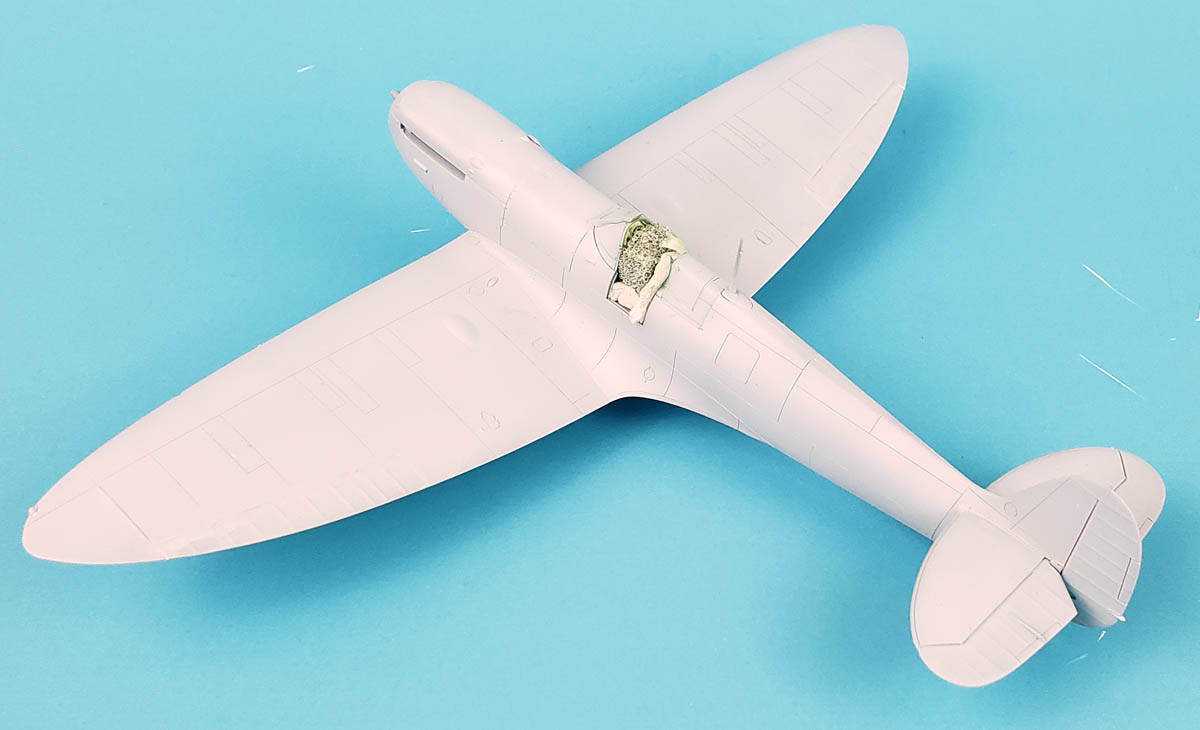

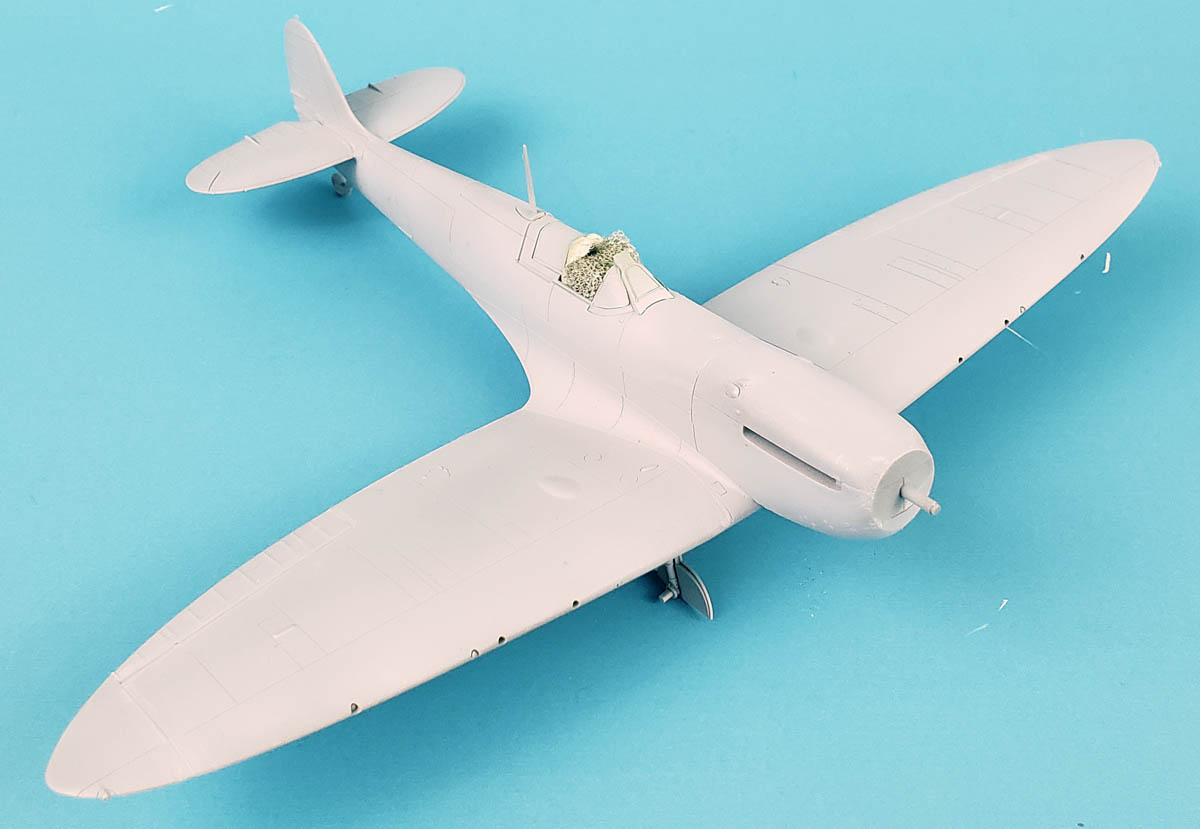


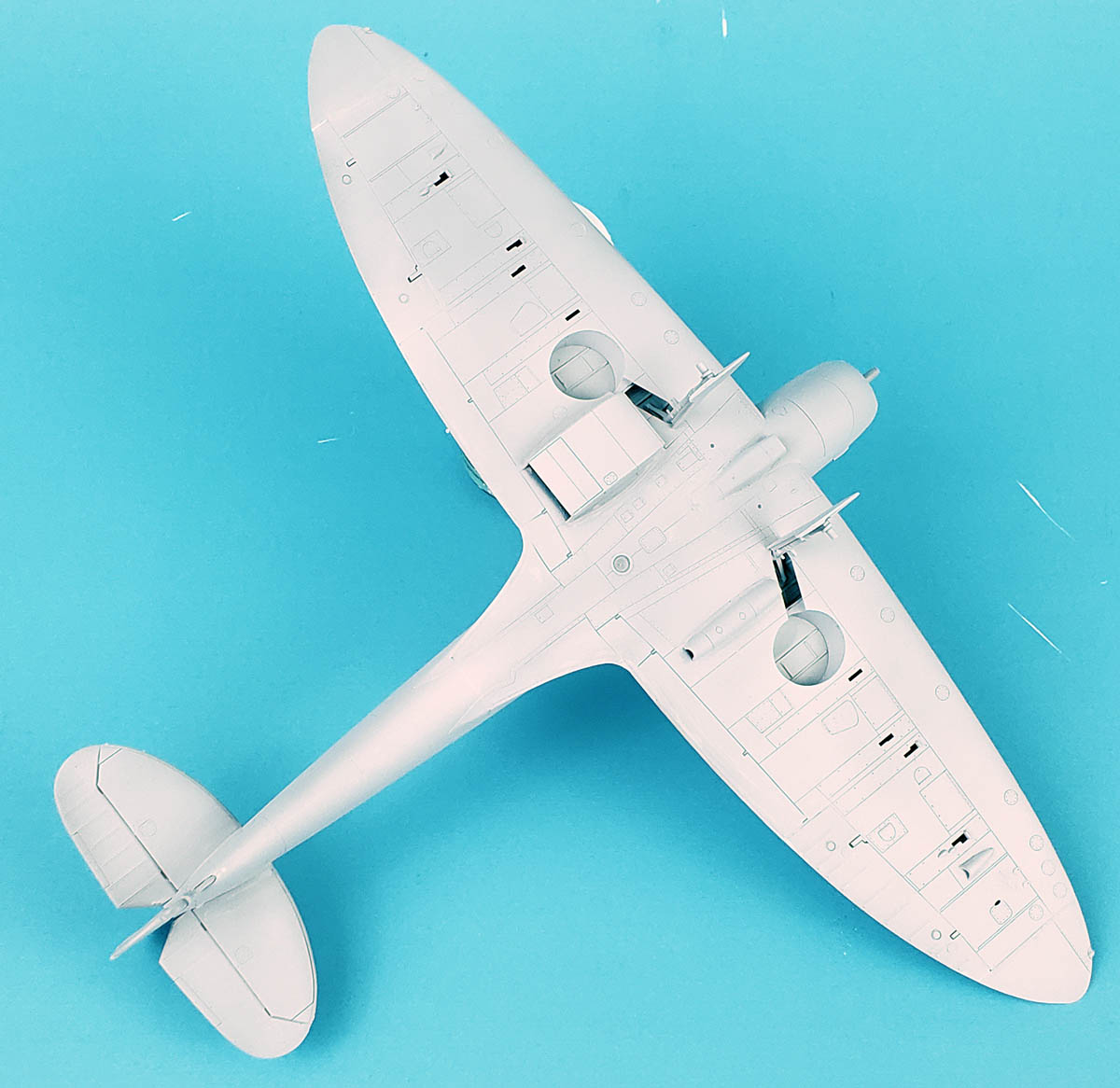

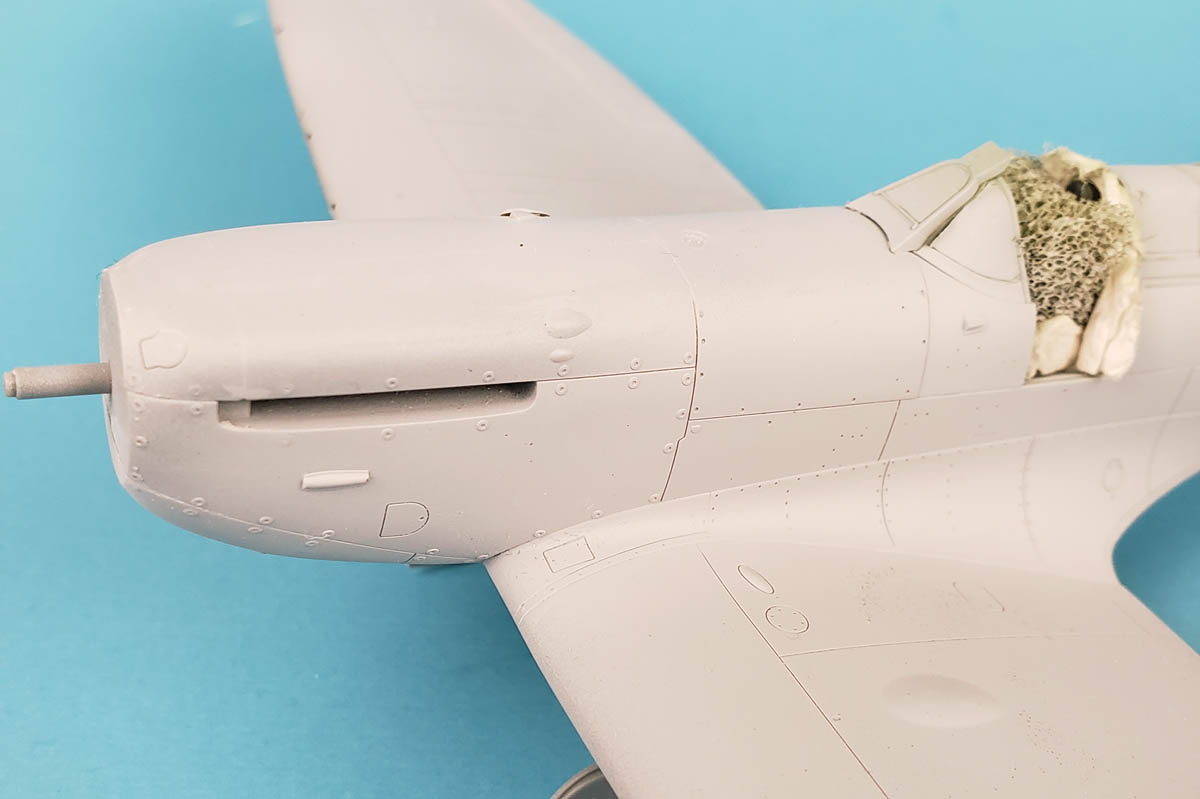





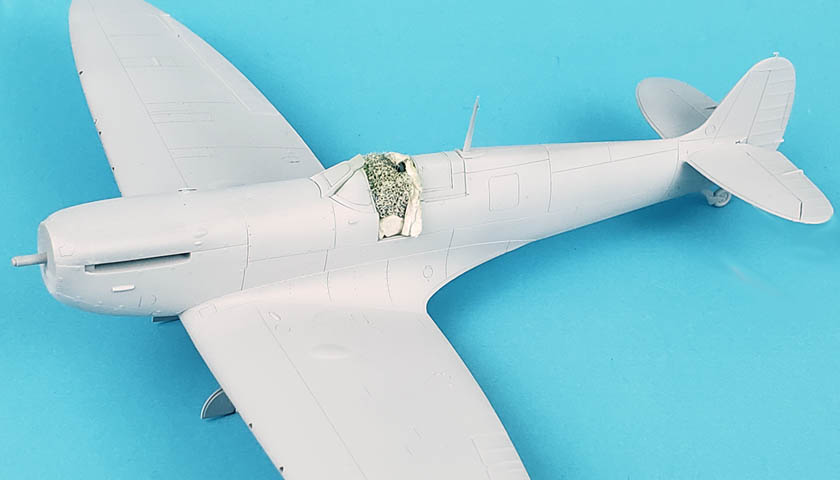
Leave a Reply